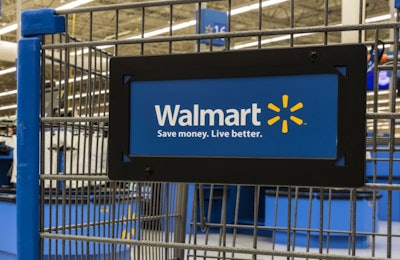
In 2018, Walmart remains the first choice for purchasing pet food and products among the largest percentage of U.S. pet owners compared to 18 other brick-and-mortar retailers, according to the results of Packaged Facts’ Q1 2018 Survey of Pet Owners as reported in “U.S. Pet Market Focus: Walmart as Competitor.”
The percentage of pet owners in the United States choosing Walmart as their primary pet product source has grown over the past three years while other pet food retailers’ percentages have declined slightly or stayed constant. Walmart, PetSmart, Petco and supermarkets were the top four brick-and-mortar retail channels during the first quarter from 2016 to 2018. In the infographic below, see how their standing as the top retail channel choice for U.S. pet owners has changed over the past three years.
Pet food and product sales at Walmart
Packaged Facts analysts estimated that pet product sales through Walmart stores reached US$9.4 billion in 2017, not including internet-based sales. That figure represents a four percent increase over the previous year.
Walmart’s pet product sales accounted for 86 percent of all pet product sales through the mass merchandiser/supercenter channel. In that channel, Target followed with an estimated US$1.3 billion in pet product sales in 2017, representing a 12 percent market share.
Walmart’s pet product sales led the overall brick-and-mortar channel with a 19 percent share of the market. The top pet specialty chain, PetSmart, accounted for an 11 percent share of overall brick-and-mortar pet product sales.
Walmart, supermarket pet food shoppers pamper pets less
Pet owners in the United States who purchased dog, cat and other animal foods at Walmart may be less likely to indulge their pets compared to shoppers at pet superstores, such as Petco and PetSmart, according to Packaged Facts’ January/February 2018 online survey. Packaged Facts analysts noted that the differences in pet parenting-type behavior shouldn’t be exaggerated. However, survey results did indicate that Walmart shoppers were more similar to those who buy pet foods from supermarkets.

















